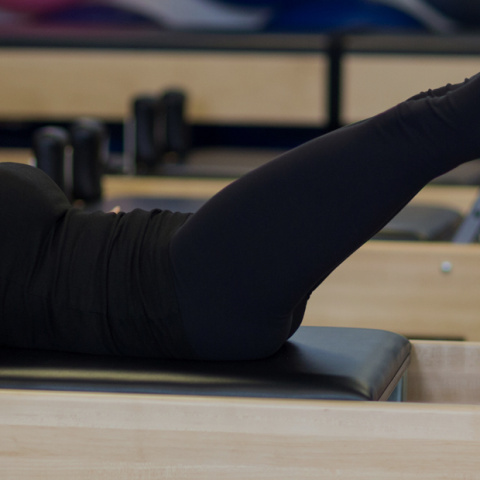Older clients can be very varied in terms of their exercise capabilities. Some people age ‘well’ and can participate in mainstream exercise opportunities without the need for the instructor to offer many adaptations. However, there are others who will require specific tailoring in order for them to be comfortable and appropriately challenged. Pilates is a popular choice for older clients as they perceive it to be a more gentle form of exercise, so you may find that a higher proportion of your sessions are attended by older adults, especially at off-peak times. Here are our pieces of advice for adapting Pilates for older adults, focusing on typical age-associated changes to posture, muscles, joints, and bone and balance mechanisms.
Adapting Pilates Exercises
Joint Mobility
Age-related changes to joints include reduced availability of synovial fluid to lubricate the articular surfaces, deterioration of the cartilage that protects the bone and decreased flexibility of tendons and ligaments. Around one in two of those aged over 75 has osteoarthritis. Joint changes and disease reduce the available range of movement, particularly around the shoulder, spine and ankles.
Exercises that promote range of movement, particularly into spine extension and rotation, such as seated spine rotation and prone ‘breaststroke’, should be prioritised. As well as this, many clients have limitations around their shoulders which make exercises working into shoulder flexion uncomfortable and demotivating. A good illustration is provided by the arm float or single arm pullover in supine lying, often used in Pilates to challenge core stability as the participant is required to maintain their neutral spine position against the weight of the arms being above their head. ‘Rib flare’ (thoracic back extension) can occur if the abdominals are unable to contract sufficiently; however, it may also occur if the client has poor shoulder flexibility. For the supine arm float clients should work within their comfortable range and be aware of rib flare as an indicator that their shoulder is too challenged, rather than there necessarily being any limitation in their core strength.
However, in prone positions where the arms are typically above the head, such as in ‘Swimming’, the participant has limited control over the extent of shoulder flexion. Try working with the arms by the sides of the body where you can ask the client to lengthen and then lift the arm off the floor – at the same time as the opposite leg – thus ensuring that the back and posterior shoulder muscles are still working.
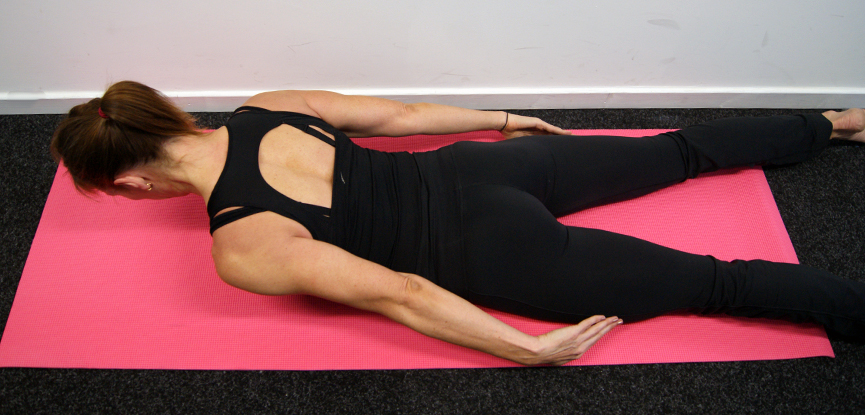
Alternatively, begin with the fingertips touching underneath the forehead and the elbows out to the sides, then lift one arm with the opposing leg.
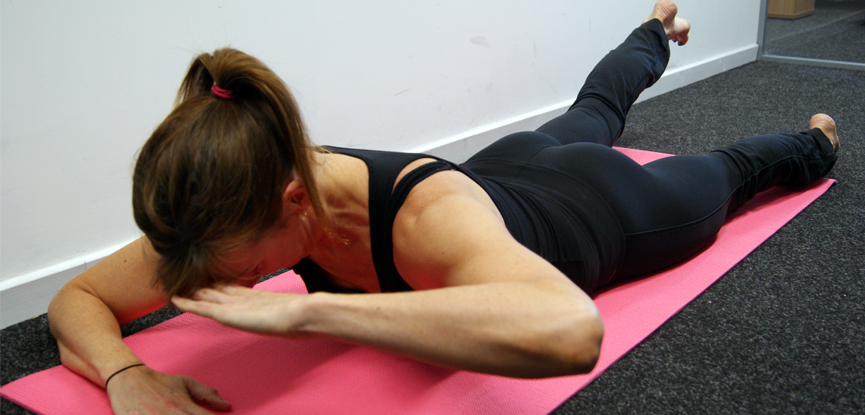
Posture
As we age, posture tends to change, often resulting in a more flexed upper back and internally rotated (rounded) shoulders. It is important to work against the effects of ageing on posture by prioritising exercises that work into spine extension and also ones that externally rotate the shoulder. One example is the classic dumb waiter exercise which can be performed in standing or kneeling (if the knees will tolerate kneeling).
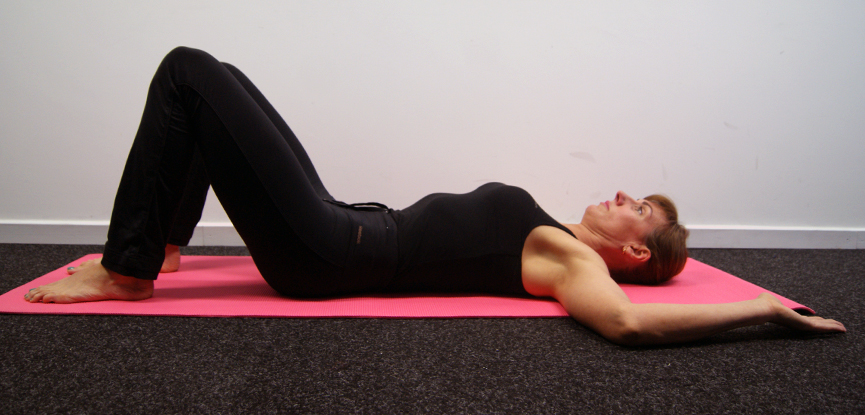
Supine lying pec deck can be used to promote chest and shoulder flexibility. Exercises that actively flex the trunk should be avoided or adapted. The Bone Health section below examines this in more detail.
Joint discomfort
Joint discomfort can also mean that older people are not comfortable bearing their body weight on their knees, for example, on all fours. The same is true of the wrists, especially when the wrist is in extension, as would also be the case when on all fours. Extra padding under the knees when performing all fours exercises, such as the classic superman, may be in order. Having a small towel handy, or making sure the client is working on two mats or folding the end of the mat, can all work. Otherwise, a prone lying version of the exercise (e.g. Swimming) may be better. The exercise focus shifts more towards strengthening of the back, hip and shoulder extensors, rather than challenging balance, but balance and core strength could be targeted using other exercises.
The prone position also reduces the load on the wrist. However, it should be recognised that whilst taking the weight off the wrists eases any wrist discomfort, it also means that that we have lost some of the beneficial strengthening work for this vulnerable joint.
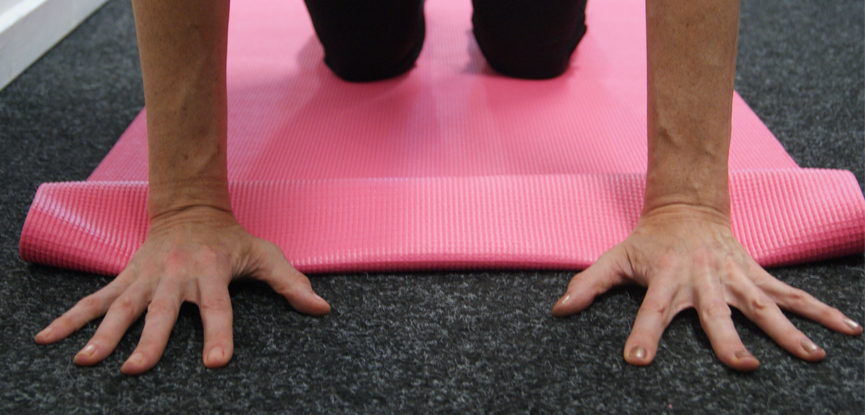
Other options which maintain the weight-bearing effect are to place a towel or rolled mat under the ‘heel’ of the hand thus reducing the amount of necessary wrist extension, or to use a fist or spread finger position.
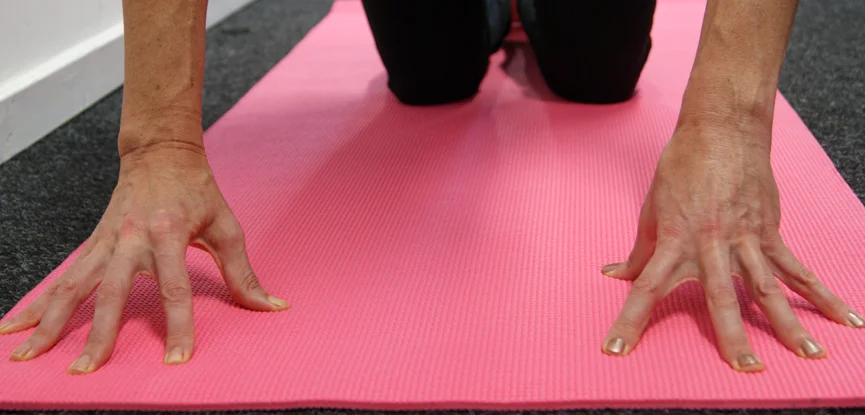
Bone Health
Bone health deteriorates as we age, especially in those with a poor calcium intake, poor exposure to sunlight, a family history of osteoporosis, or who take prescribed medication with bone-related side effects (such as corticosteroids). A landmark study in 1984 found that lying and seated spine flexion caused more fracture of the vertebrae than no exercise at all in those with osteoporosis, therefore, Pilates exercises that encourage active spine flexion should be adapted.
One such example is the shoulder bridge. This commonly used exercise works the back and hip extensors. These are target muscles to help with postural stability and gait, so in this respect, shoulder bridge is a beneficial exercise for our older participants. However, it is usually taught by strongly pressing the lumbar back into the mat from the start position; a posterior pelvic tilt, with maximal use of rectus abdominis. This ‘curling up’ into the full bridge is typically followed by ‘curling down’ when, again, the spine is actively flexed. There are two possible ways to avoid this for those with known osteoporosis or osteopenia. Firstly, opt for working the back extensors from a prone lying position, for example, the breaststroke exercise. Alternatively, stick with the classic shoulder bridge, but encourage the participant to raise their hips off the floor without segmental use of the spine. In other words, they lift the back as one ‘unit’ rather than trying to curl up, or down, one vertebrae at a time. This way you will maintain the simultaneous use of the back and hip extensors.
Nervous system
Age-related changes to the nervous system mean that our balance deteriorates as we age and many older people experience falls; one in three of those aged 65+. The active, independent older population who access mainstream exercise opportunities may well be those who have not experienced falls, but there is a growing body of research to support proactive, preventative falls prevention exercise. Pilates that is mainly mat-based is limited in its ability to train balance mechanisms. One obvious solution is to extend the time spent standing, especially focusing on activities that reduce the base of support, for example, working on one leg.
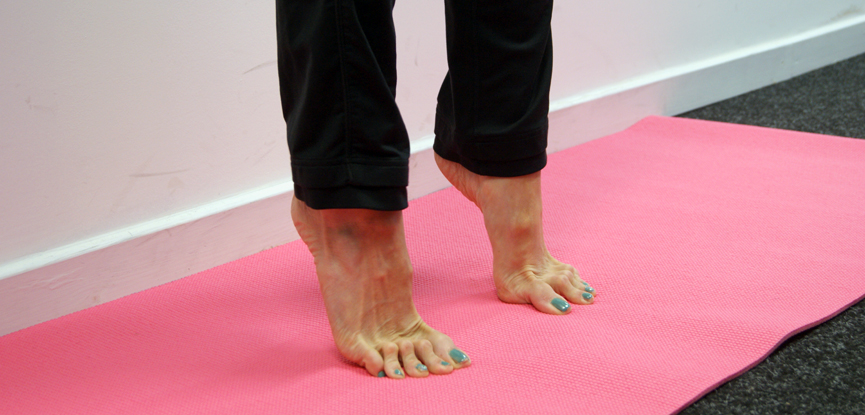
In addition, exercises that strengthen the ankles, for example, working the calf muscles using heel raises, can improve ankle function. Ankle flexibility can be promoted with foot pedals.
Quadriceps
Effectively working the quadriceps is another goal of exercise with older clients. Quadriceps strength and power are essential for function and the quads have been referred to as the ‘independence muscles’ in some literature. Mat-based Pilates can involve poor workloads for the knee extensors generally. Monkey squats are just the ticket, but you may find that some older participants have poor tolerance and range of movement due to knee discomfort.
Our recommendation is to persevere with this activity as it has such fantastic functional benefits, but check that the knees are not travelling too far forwards of the foot. It may be that this incorrect knee position is actually caused by poor ability to extend the lumbar spine, caused in turn from poor lumbar spine posture. In this case, work on anterior pelvic tilting in standing. This is often taught in Pilates using visualisation; ‘tipping water out of the front of the bowl’, to encourage a lumbar curve.
Hips
Hips are another target body area for the older exerciser. Hip fracture is common in the frailer, older population; therefore, maintaining hip abductor strength is important. This not only provides some additional ‘padding’ in the event of a fall onto the hip, but effective strength training of the hip abductors (and hip extensors) can illicit a bone-loading effect. The Oyster is a good starting point, but potential challenges for older adults include discomfort in the underneath hip as it presses into the mat.
Again, extra cushioning in the form of a towel, or a thicker mat can help. Otherwise, work with a smaller angle at the hip joint (knees more tucked up) as this reduces the amount the greater trochanter (knobbly part of the hip) can protrude into the floor. Double leg raise in side-lying is another, more challenging, exercise for the hip abductors, but often with more potential for hip pain on the underneath limb. Instead, try the oyster with elevated feet.
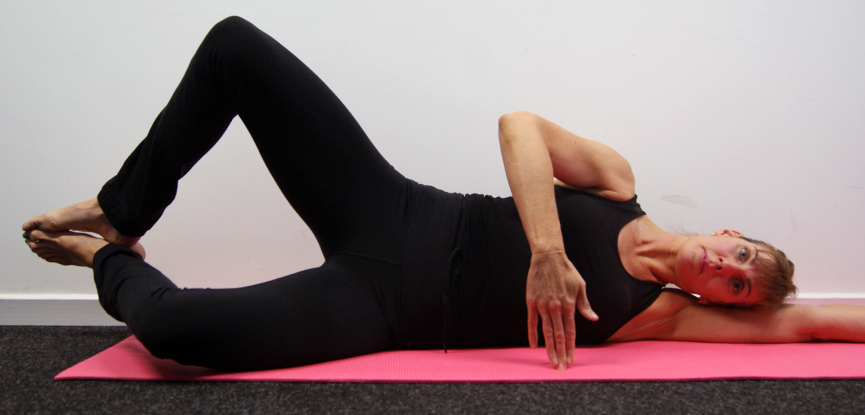
This benefits from engaging the lower leg (like the double leg raise) and encouraging a fuller range of hip work, but with the hips at a more comfortable angle.
Pilates is incredibly popular with older exercisers and, with some tailored adaptations, can be achievable for a broad range of abilities. As well as this, Pilates can address some of the goals of exercise for older adults, for example, maintaining strength in muscles that affect daily function and targeting common fracture sites, such as the hip, wrist and spine.
